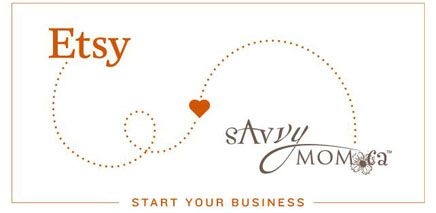Ten Steps for Jump Starting Your Own Business

Do you have a talent or clever entrepreneurial idea that you’re ready to turn into an unstoppable revenue-generating machine? To help you get started, I’ve put together a list of ten important elements to consider as you start planning. Your initial brainstorm doesn’t need to take long, but make sure to keep it real; be as honest as possible when considering what your business will need to see success. Honesty will be invaluable to help get your business off the ground.
 Jot down ideas around each of these prompts on a separate piece of paper as you go along, and pretty soon a strategy based on your unique needs will start to take shape. Don’t worry if it feels a bit daunting at first—we’ll sort out your ideas along the way.
Jot down ideas around each of these prompts on a separate piece of paper as you go along, and pretty soon a strategy based on your unique needs will start to take shape. Don’t worry if it feels a bit daunting at first—we’ll sort out your ideas along the way.
1. Give It a Name
Nothing is written in stone, especially when you’re starting an online shop, you can always change it later—don’t be afraid to think outside the box! Here are some questions to think about while you’re pinning down the perfect name for your shop:
- Is it easy to spell? ‘Grace Design’ is a good example. ‘Supercalifragilisticexpialidocious Design’ may not be a great choice.
- Does it have a nice ring to it? A little alliteration can go a long way. (Like: Mambo Jambo, The Sock Worms, Chic Le Freak)
- Does it reflect your business and style?
- Is it quirky and memorable? A name like ‘Blue Bananas’ is unique and stands out.
- Do you want to include your craft or interest within your name?
- Or why not use your own name? (Or your mother’s maiden name, or your great grandma’s)
2. Keep Descriptions Concise and Enticing
When you list your product for sale, do it justice by describing it well. Think about the questions your customers will be asking, such as:
- What is your product made of?
- What size is it? Are there different size options available?
- What inspired your product?
- What makes your item unique or special?
In addition, it’s always nice to include photos that help to illustrate your item’s story further and show the product in context.
3. Establish Your Entrepreneurial Identity
In order to be successful, it’s important to consider the tools and skills you have accessible. First, think about your own interests and abilities.
- Why do you want to start a business?
- How will your past experience and training help with this endeavor?
- What makes you confident in your potential success?
Next, consider everyone else who will be involved. Do you have business partners or production help? Move through the questions above for each contributor.
Pro Tip: If you don’t have business partners, consider trading talents with a fellow creative entrepreneur. Perhaps a friend can help you with your photography, marketing or assembly in exchange for your help with graphic design or social media advice.
4. Perfect Your Elevator Pitch
An ‘elevator pitch’ is a quick summary of your business that can be read in two minutes or less (the time it takes to ride an elevator, in other words). It should include:
- Your name
- Your mission
- What your business does
- Who your business serves
- Why what you’re offering is different
It should be straight to the point and full of confidence.

Photo by LarchTradingCompany
5. Research Your Target Market
A target market is a group of potential customers who share characteristics related to your product. Once you’ve identified the ideal person to market to, you can better understand how your products meet (or should meet) your customer’s needs and problems. Jot down a few descriptors about how you think of your ideal customer, including their:
- Gender
- Geography
- Age
- Shopping habits
- Interests
Try to be as specific as possible. Learn more by reading How to Find Your Target Market.
6. Consider the Competition
Think about whom your customers will buy from (or do buy from) when they’re shopping for products like yours. Knowing your who your competition is can be just as important as knowing who your customers are. Check out 5 Tips to Stand Out From the Competition for more strategies.
7. Price Your Items Right
For most creative people, pricing is a concept they’d rather skip. Even I don’t necessarily want to write about it. But think about it now will undoubtedly save you time and money in the long run.
Here’s a basic formula to get you started:
Materials + Labor + Expenses + Profit = Wholesale x 2 = Retail
You can break down each category further with A Simple Formula for Pricing Your Work. Don’t be afraid to adjust your prices as you learn and experiment.
Pro Tip: As a former small business owner, here’s a true insider tip: Don’t stress about making more than one item per design. Put this single item on Etsy, and see in the statistics how much this item is viewed. Once an item of starts selling well, make a few more of them. If it sells really well, then you can decide to start buying materials in bulk. This way you avoid the risk of going bankrupt and being left with tons of extra stock.
8. Make a Marketing Plan
No one will know about the beautiful flowerpots you make unless you share them with the world. So how are you going to reach potential customers? Word of mouth? Advertising? Promotional materials? Social media? Your own website? Etsy? Check back during week three of #ProjectNewYear for advice from Etsy experts on social media strategy, and don’t miss the Top Ten Marketing Tips From Full-Time Etsy Sellers.

9. Set Goals for the Future
Your vision for success should stem from a realistic and personal evaluation of your business, and ideally, challenge you to grow as a small business owner. Where do you want your business to be in six months? Once you know set that goal, break those six months down into more manageable chunks. Learn more in 3 Easy Steps for Managing Time and Reaching Your Goals.
10. Think About Your USP (Unique Selling Point)
What is your unique selling point, or USP? It’s incredibly important that you include this in your business plan. Why would a client choose you over another business? What do you do best? A few famous USPs include: ‘Melt in your mouth, not in your hand.’ and ‘Just do it.’ The key to creating a good USP is to be different and to reassure the client. Don’t try to be the best, just be different.
Before working as a Digital Marketing Specialist for Etsy, Ingrid Maria Meijer started a business of her own, designing and producing fair-trade clothing. Her label was sold in four countries, nominated twice for the finals of The Green Fashion Competition and her business plan was rated top 4 out of 200. She recently started an Etsy shop, Ingrid Van Zon, just for the fun of it.
Ready to get your idea out there?
Don’t miss out on the feedback of like-minded folks on your business idea. Check out Etsy’s Mother’s Finest team to connect with other parents participating in #ProjectNewYear.
Open Your Shop Today

If you’re ready to open your shop this month, Etsy and Savvy Mom are offering a promotion to give first time sellers a helping hand. Click on the link below to receive your first 20 shop listings free. Be sure to check back over the next four weeks to learn inside tips from Etsy experts and keep growing your business.














